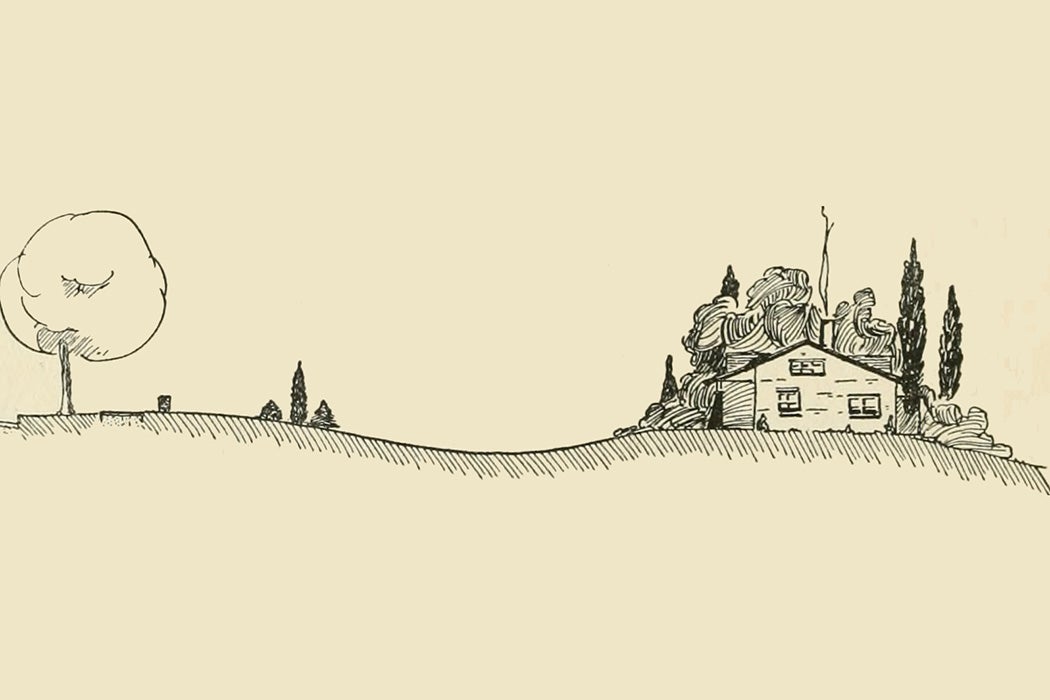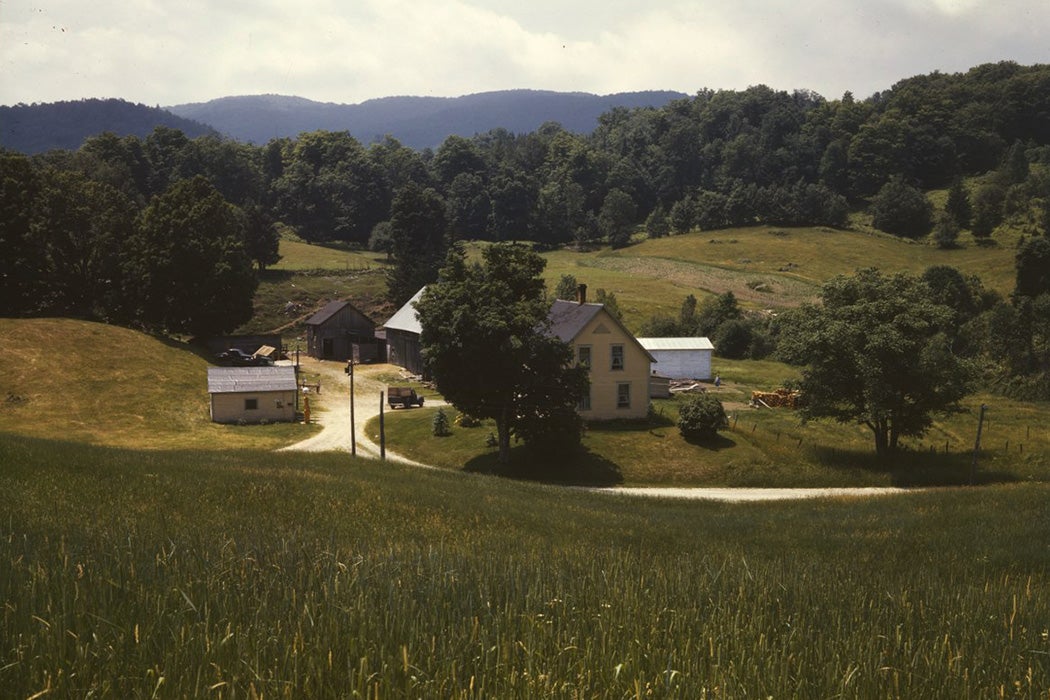The COVID-19 pandemic, unpredictable air travel, the so-called van life trend—these are among the factors that have had some people turning toward road trips over the past few years. Three generations ago, a different combination of circumstances resulted in a similar phenomenon. One of the clearest leading voices at that time was John Brinckerhoff Jackson, known as “Brinck” among friends and J. B. as an author.
Between teaching stints at Berkeley and Harvard, Jackson drove across the United States drawing, photographing, and observing the built landscape and then triangulating what he saw into short, insightful essays. He’s perhaps best known for his eminently accessible writing style, which today makes his work seem more akin to articulate and well-informed blog posts than the relatively long, dense academic articles that one might imagine from an Ivy League professor.
But it doesn’t take much effort to discover that directness of Jackson’s distinctive storytelling extended into other areas of his work as well. Indeed, he fixed most of his attention on understanding the modest world of regular people instead of the privileged environments of costly, high-style architecture. And he also started his own public journal to give like-minded authors a platform for circulating their own observations within a wider and more diverse audience than contemporary scholarly journals tended to reach. Jackson might not recognize much about our twenty-first-century built landscape if he were to suddenly appear today, but looking back over his career there is something familiar about the spirit of open curiosity he modeled.
It isn’t surprising that someone who challenged expectations with his writing style, subject matter, and professional methodologies also rather famously challenged disciplinary boundaries. In other words, Jackson was, and likely will always be, a little hard to classify. He earned a bachelor’s degree with a double-major in history and literature but didn’t continue on to graduate school like the people who were his eventual faculty colleagues. Then he studied architecture and commercial drawing, neither long enough to finish to the professional degree.
Instead, Jackson found his intellectual home in departments of cultural geography, where the core inquiry encompasses not just the intangible qualities of culture or tangible manifestations of place but the complex relationships between them. More recently, a suggestion has been made that his life and work might equally be considered within the context of hodology. Deriving from the Greek word hodos or path, hodology is most often applied to the study of neural networks in the brain, but in Jackson’s case the term it’s meant more as the study of interconnected roadways. Categorized or not, though, a key to appreciating Jackson’s work is to recognize that the paths he thought about most deeply were neither entirely literal nor entirely figurative but a kind of synergistic version of both, converging and separating and converging again through actual space, the expanses of time, and the topography of our shared imaginations.

Jackson’s writing is definitively and genuinely critical; over and over, he looked at what and where people built in order to identify larger themes about their social priorities. The goal was to illuminate, not sentimentalize. Indeed, this is part of what decades of readers have celebrated about “The Westward-Moving House,” arguably Jackson’s most influential individual piece of writing. In this essay, he proposes a cultural history of the United States by exploring the architectural decisions made by three distinct generations of a single family as they moved from England to Massachusetts in the seventeenth century, from Massachusetts to Illinois in the nineteenth century, and from Illinois to Texas in the twentieth.
Like Nehemiah, Pliny built a temporary shelter for the family first of all; only he built it out of logs and thus made it larger and more comfortable than that first underground Tinkham shelter. He did not have to cut down many trees to clear his land, for most of it was clear already, but he did have to cut them down for the log cabin, for a barn for the livestock, and for fences to keep the animals from wandering across the prairie. He soon saw that wood was not to be wasted in southern Illinois; there was too little of it. Again like his ancestor, Pliny hastened to plant the fields he had prepared; but instead of planting for family needs he planted twenty acres to wheat—in order to have a cash crop as soon as he could.
Importantly, Nehemiah, Pliny, and everyone else Jackson profiles in “The Westward-Moving House” are entirely fictional. From beginning to end, even the buildings that he so deftly describes are his own creations. The details of these people’s lives are based in thoughtful observations and well-researched fact, though, making the family and their attitude toward their built landscapes extremely relatable despite the unexpected short story-type format. The lack of nostalgia could conceivably feel at odds with the unpretentious tone, but it was Jackson’s particular gift to navigate that challenge in memorable and resonant ways.







